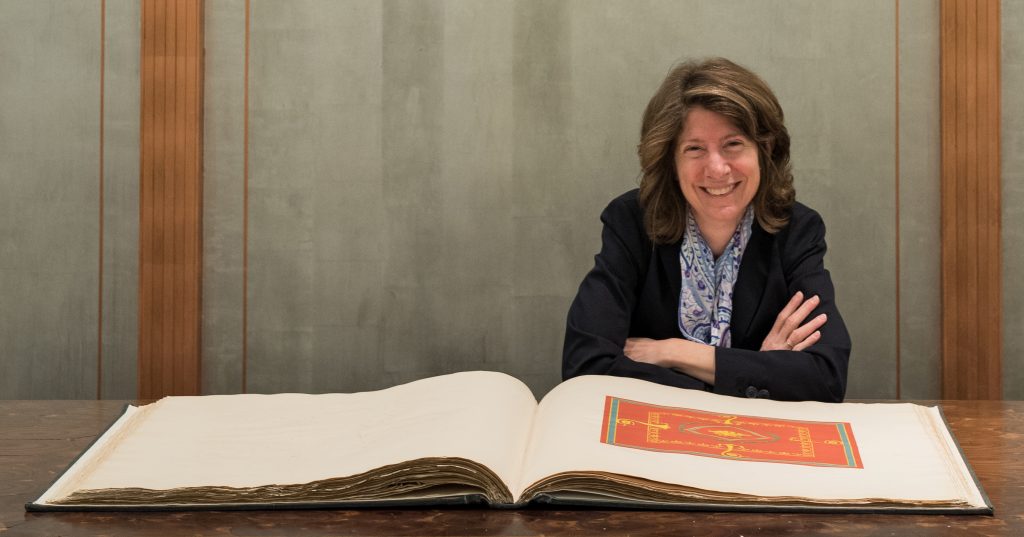September 15, 2021
This month, we’re delighted to spotlight Elise Friedland, National Liaison for the Washington, D.C. Society. Elise is Associate Professor of Classical and Ancient Near Eastern Studies and Art History in the Department of Classical and Near Eastern Languages and Civilizations at George Washington University. In 2013, she received the AIA’s Excellence in Undergraduate Teaching Award. She’s served on multiple AIA committees and lectured for the National Lecture Program in the past. In 2020, Elise was awarded a NEH Public Scholar Fellowship to write Classical Washington: Greece & Rome in the Art and Architecture of DC.
We asked Elise some questions about how she got involved with the AIA and we’re excited for you to read her words!
What interests you about ancient art and archaeology?
I am fascinated by being able to study physical pieces of the past to learn about the Greek, Roman, and classical Near Eastern worlds. In addition, I relish tracing the impact of those pieces of the past on subsequent, post-antique societies, especially nineteenth century America. I always tell my students: objects live longer than the people who made them! If we today can re-contextualize these pieces of the past that have survived into our world (how they were made and used and what messages they carried in their original settings), then we can learn all sorts of things about the people who made and used them. In particular, I study public art, especially Roman sculpture that was imported from Greece and Turkey to Roman period Israel and Jordan. Through sculptural displays on the eastern-most fringes of the Roman empire, such as at Gerasa, Jordan, we can track the trade in ancient marble in the Eastern Mediterranean, see local populations dialoguing with the emperor through the erection of statues of specific subjects, and witness the impact of Roman styles and subjects on local art. More recently, I have also been studying how our early American founding fathers and their artists and architects adopted and adapted various classical monuments, motifs, and styles to plan, build, and decorate Washington, D.C., and why they sought to make our nation’s capital into a “new Rome on the Potomac.” This research reveals why Washington, D.C., looks the way it does—after all, we have a Doric temple at one end of the National Mall that houses a cult statue of a former president, an Arch of Constantine on the facade of our central train station, and equestrian statues of generals dotting the centers of circular plazas created by the city’s diagonal avenues. It also shows how and why pieces of the past continue to impact and live on in our visual world—well beyond their original, ancient contexts.
How did you find out about the AIA?
I learned about the AIA from my beloved professors who taught me in the fall of 1986 at the Centro (Intercollegiate Center for Classical Studies in Rome): Professor John Fischer (Emeritus, Wabash College), Professor John D. MacIsaac (Mary Washington University), and Professor Liane Houghtalin (Mary Washington University). They encouraged me to attend a meeting upon my return to the U.S. from my semester in Rome, so I joined and attended my first AIA Annual Meeting as a junior in college in December 1986!
What made you decide to get more involved with the Washington, D.C. Society?
I had been involved with leadership of AIA Societies since my graduate student days, when our faculty at the University of Michigan made sure that their grad students served as Graduate Student Representatives on the board of the local Ann Arbor Society. When I garnered my first job at Rollins College in Winter Park, FL, and found that the Central Florida (Orlando) Society had just been chartered, I jumped right in and eventually became the President of that Society. When I moved to D.C. for a new position at George Washington University, I immediately offered to serve on the board, where I began as the National Liaison (a position they created, so that I could serve on the board immediately upon my arrival) and eventually served as President.
